- Benefits of Growing Pears on Rowan Trees
- Choosing the Right Variety of Pears for Rowan Trees
- Planting and Caring for Rowan Trees as a Support for Pears
- Planting Rowan Trees
- Caring for Rowan Trees
- Training Pears on Rowan Trees
- Pruning Techniques for Pears Growing on Rowan Trees
- 1. Timing Pruning
- 2. Removing Dead, Diseased, and Damaged Branches
- 3. Thinning Out Branches
- 4. Training the Tree
- 5. Removing Suckers and Water Sprouts
- 6. Pruning After Fruit Harvest
- Soil and Fertilization Tips for Successful Pear Growth on Rowan Trees
- Choosing the Right Soil
- Fertilization Techniques
- Applying Fertilizer
- Mulching
- Watering and Irrigation Needs of Pears on Rowan Trees
- Determining the Watering Schedule
- Watering Methods
- Monitoring Soil Moisture
- Supplemental Irrigation
- Conclusion
- Dealing with Pests and Diseases When Growing Pears on Rowan Trees
- Pests
- Diseases
- Harvesting and Storing Pears from Rowan Trees for Long-lasting Freshness
- Harvesting Techniques:
- Storing Techniques:
- Tips for Prolonged Freshness:
- Question-answer:
- Can I really grow pears on rowan trees?
- What is grafting?
- Why would I want to grow pears on rowan trees?
- When is the best time to graft a pear scion onto a rowan rootstock?
- Will the pears grown on rowan trees be different from those grown on pear trees?
- Are there any special care instructions for growing pears on rowan trees?
- Video: Growing Avocados 2023 (Part 1)
Growing pears on rowan trees can be a great way to maximize your fruit harvest. While rowan trees are typically known for their ornamental value, they can also serve as a host for fruit-bearing plants like pears. By grafting pear branches onto a rowan tree’s rootstock, you can create a unique and productive tree that offers the beauty of rowan leaves and the delicious fruits of pears.
When selecting a rowan tree for grafting pears, look for a healthy and strong specimen. The tree should have a sturdy trunk and be free from any diseases or pests. It’s recommended to choose a rowan tree that is at least three years old, as younger trees may not have a developed root system to support the additional weight of the pear branches.
Grafting pears onto a rowan tree involves carefully attaching a pear scion, or a branch with buds, onto the trunk or a suitable branch of the rowan tree. The scion should be cut at a slanted angle to increase the surface area for contact with the rowan tree. Secure the scion with grafting tape or twine, making sure it is tightly held in place.
After grafting the pear scion onto the rowan tree, it’s important to monitor the moisture levels and provide appropriate care. Water the tree regularly, especially during dry seasons, and ensure that it receives adequate sunlight for optimal fruiting. Pruning the tree in late winter or early spring can help control its growth and shape, while also promoting better air circulation and fruit production.
With proper care and attention, your grafted rowan tree can produce an abundant harvest of delicious pears. You can enjoy the beauty of rowan leaves and the satisfaction of growing your own fruit, all in one tree. So, consider grafting pears onto a rowan tree and experience the joy of nurturing a fruitful and unique tree in your garden.
Benefits of Growing Pears on Rowan Trees
Growing pears on rowan trees has several benefits that make it a popular choice for many gardeners. Here are some of the advantages:
- Natural Support: Rowan trees provide a sturdy and natural support system for growing pears. The strong branches of rowan trees can easily bear the weight of the pear fruits and prevent them from falling to the ground.
- Space Saving: Growing pears on rowan trees allows you to make the most of your garden space. Instead of planting separate pear trees, you can utilize the existing rowan trees to grow the fruit. This is especially useful for small gardens where space is limited.
- Aesthetic Appeal: Rowan trees have beautiful foliage and attractive red berries. By growing pears on rowan trees, you can create a visually appealing and diverse garden. The combination of the rowan tree’s vibrant colors and the pear fruits hanging from its branches can be quite stunning.
- Companion Planting: Rowan trees and pears are compatible plants that can benefit each other. Rowan trees can attract beneficial insects and birds that help with pollination and pest control. The rowan tree’s deep root system also helps to improve soil quality, which in turn benefits the pear tree’s growth.
- Low Maintenance: Growing pears on rowan trees is generally low maintenance. Once the pears are established on the rowan tree, they require minimal care and attention. This makes it a convenient choice for gardeners who want to enjoy the abundance of fruit without investing too much time and effort.
Overall, growing pears on rowan trees offers numerous benefits, including natural support, space-saving, aesthetic appeal, companion planting advantages, and low maintenance requirements. Consider giving this unique gardening technique a try to enjoy a bountiful harvest of delicious pears.
Choosing the Right Variety of Pears for Rowan Trees
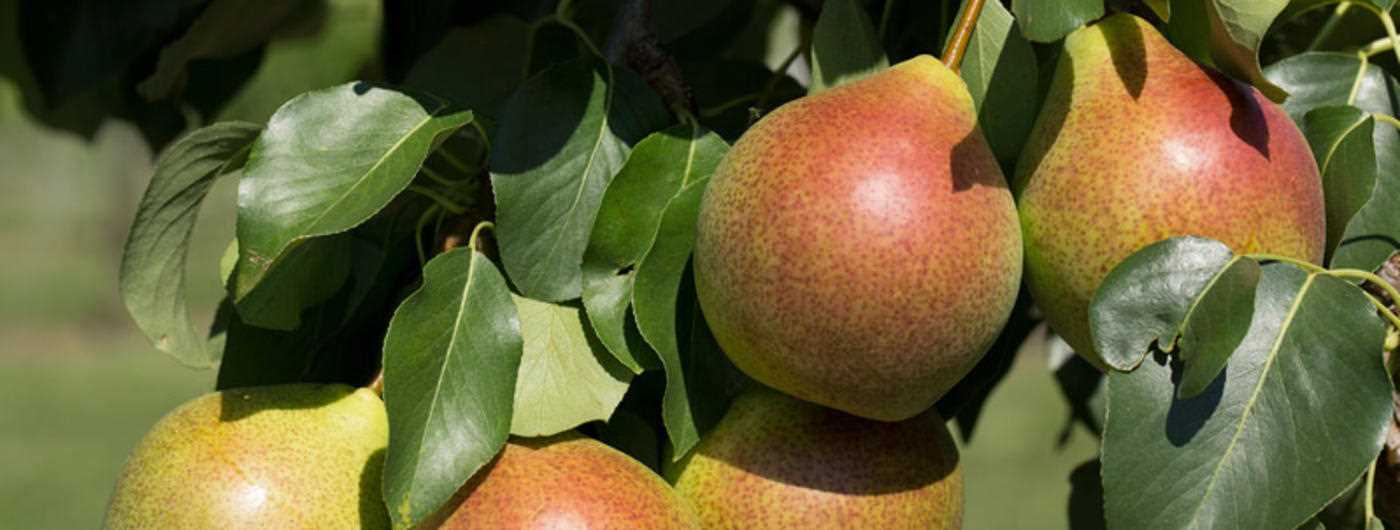
- Consider Your Climate: Pears are typically grown in moderate to cool climates, and it is important to choose a variety that is well-suited to your specific location. Some pear varieties are better suited for colder climates, while others thrive in warmer regions.
- Determine the Size of Pear Tree: Pear trees can range in size from dwarf varieties that are suitable for small yards or containers, to larger trees that require more space. Consider the available space you have and choose a variety that will fit comfortably in your landscape.
- Identify Your Pollination Needs: Some pear varieties are self-pollinating, meaning they do not require another pear tree for cross-pollination. Others are not self-pollinating and will need a compatible variety for good fruit set. Be sure to research the pollination requirements of the specific pear variety you are considering.
- Consider Disease Resistance: Pear trees can be susceptible to certain diseases, such as fire blight, pear scab, and powdery mildew. Look for varieties that are known for their disease resistance to reduce the risk of pest and disease problems.
- Explore Flavor and Texture: Pears come in a variety of flavors and textures, ranging from crisp and juicy to soft and melting. Consider your preferences and choose a variety that suits your taste.
- Research Harvest Time: Pears can have different harvest times, ranging from early to late in the season. Consider when you prefer to harvest your pears and choose a variety that ripens during that time.
When choosing the right variety of pears for rowan trees, it is important to consider your climate, the size of the pear tree, pollination needs, disease resistance, flavor and texture preferences, and the desired harvest time. Doing your research and selecting the right variety will help ensure a bountiful harvest of delicious pears from your rowan trees.
Planting and Caring for Rowan Trees as a Support for Pears
Growing pears on rowan trees can be an excellent way to maximize fruit production in your garden. Rowan trees, also known as mountain ash trees, provide a sturdy and attractive support structure for pears, helping to keep the branches upright and preventing the fruit from touching the ground.
Planting Rowan Trees
When planting rowan trees as support for pears, it is important to choose a suitable variety of rowan tree. Look for a cultivar that is compatible with the climate and soil conditions of your area. Rowan trees prefer well-drained soil and full sun.
Prepare the planting site by clearing away any weeds or grass and loosening the soil. Dig a hole that is wide and deep enough to accommodate the rowan tree’s root ball. Gently place the tree in the hole, making sure that the roots are spread out and not cramped. Backfill the hole with soil, firming it gently around the roots.
Water the newly planted rowan tree thoroughly and add a layer of mulch around the base to help retain moisture and suppress weed growth. Keep the tree well-watered, especially during dry periods, and monitor for any signs of pests or diseases.
Caring for Rowan Trees
Once the rowan tree is established, it requires minimal care. Regularly inspect the tree for any broken or damaged branches and prune them off to maintain a strong framework. Pruning should be done during the dormant season to minimize stress on the tree.
Ensure that the rowan tree receives adequate water, especially during the summer months when rainfall may be scarce. Water deeply, soaking the soil to a depth of at least 6 inches, and mulch the base of the tree to conserve moisture.
Regularly monitor the rowan tree for signs of pests or diseases, such as aphids, powdery mildew, or fire blight. If any problems are detected, take appropriate measures to control or prevent further damage, such as applying insecticidal soap or fungicides.
Training Pears on Rowan Trees
When training pears on rowan trees, it is important to choose a pear variety that is compatible with the rowan tree’s growth habit. Select a pear cultivar that has a naturally upright or semi-upright growth habit, as this will make it easier to train the branches onto the rowan tree.
Begin training the pear tree onto the rowan tree when the tree is young and flexible. Gently tie the main branches of the pear tree to the branches of the rowan tree using soft plant ties or twine. Avoid tying the branches too tightly, as this can restrict growth and cause damage.
As the pear tree grows, continue to loosely tie the branches to the rowan tree to provide support and prevent the branches from drooping. Regularly inspect the ties to ensure they are not causing any damage or constriction.
Monitor the pear tree regularly for any signs of pests or diseases and take appropriate measures to control or prevent damage. Prune the pear tree as necessary to maintain a balanced shape and remove any dead or diseased wood.
By planting rowan trees as support for pears and providing proper care and training, you can enjoy an abundant harvest of delicious pears while also enhancing the beauty of your garden.
Pruning Techniques for Pears Growing on Rowan Trees
Pruning plays a crucial role in maintaining the health and productivity of pear trees that are growing on rowan trees. The following pruning techniques will help you achieve an abundant harvest of fruits:
1. Timing Pruning
The best time to prune pear trees growing on rowan trees is during the dormant season, typically in late winter or early spring before the buds start to swell. Pruning during this time minimizes the risk of disease transmission and allows the tree to focus its energy on new growth.
2. Removing Dead, Diseased, and Damaged Branches
Start by inspecting the tree for any dead, diseased, or damaged branches. These branches should be completely removed to prevent the spread of disease and to improve the overall structure of the tree.
3. Thinning Out Branches
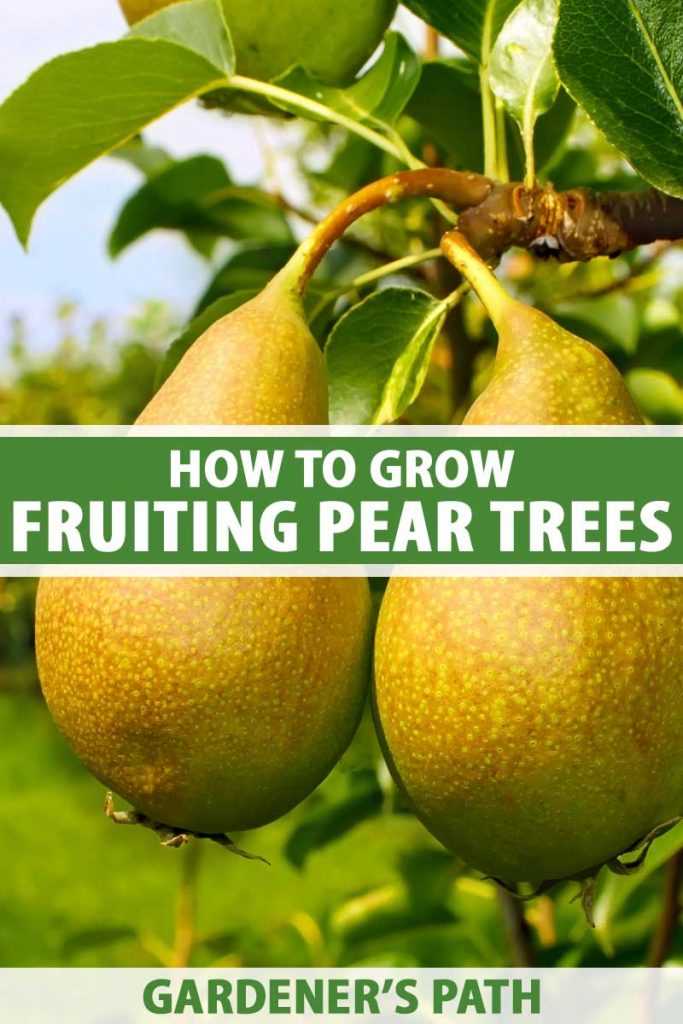
To allow better air circulation and light penetration, thin out crowded branches. Identify branches that are crossing or rubbing against each other and remove one of them. This will improve the overall health of the tree and reduce the risk of pest and disease infestations.
4. Training the Tree
Shape and train your pear tree by selecting a central leader and removing competing branches. Ensure that the central leader is growing upright and that the side branches are evenly spaced. This will help maintain an open canopy and facilitate better fruit production.
5. Removing Suckers and Water Sprouts
Regularly check the base of the tree and remove any suckers or water sprouts that may have grown. These shoots steal energy from the tree and reduce the overall fruit production. Use a clean, sharp pruning tool to cut them off at their base.
6. Pruning After Fruit Harvest
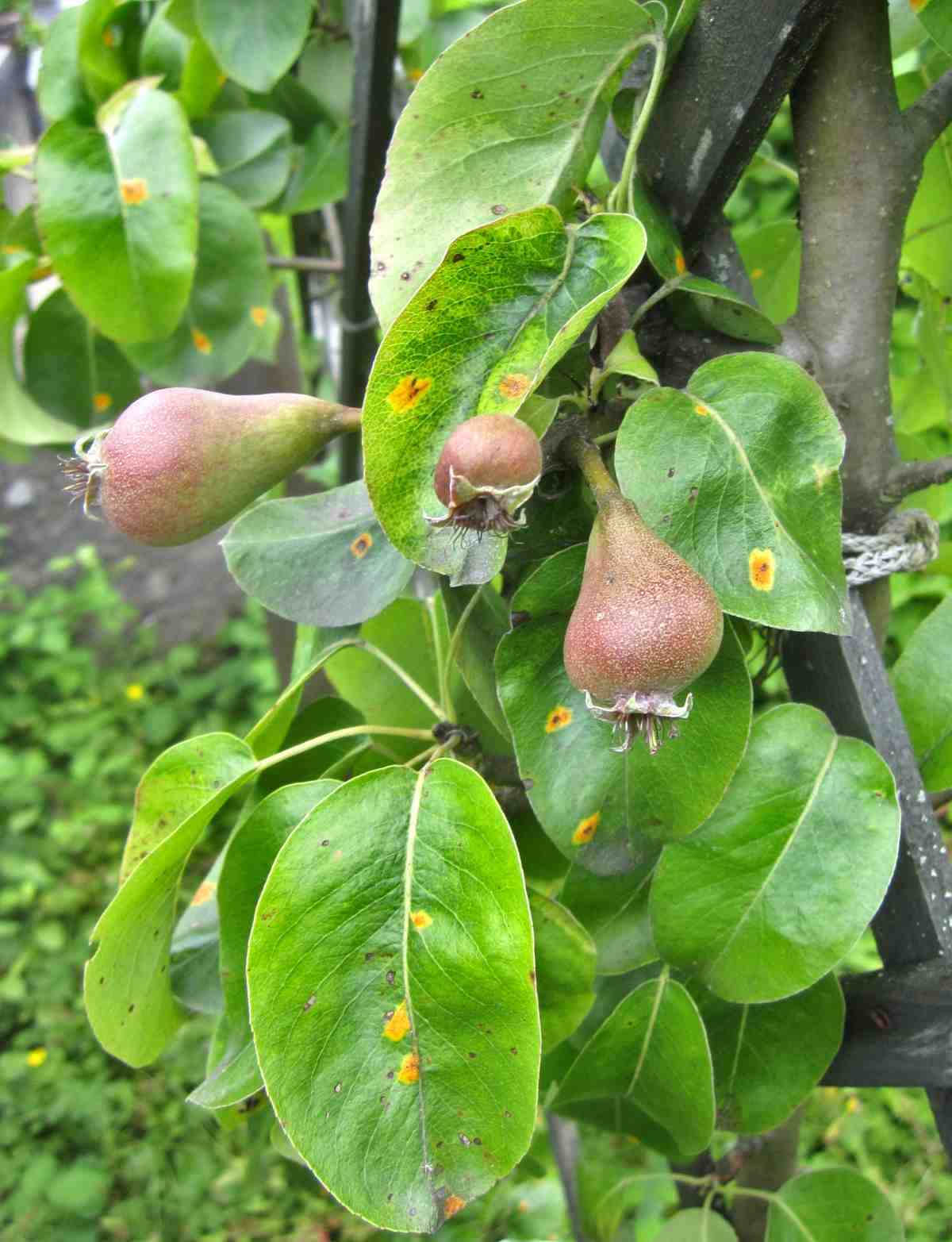
After harvesting the pears, you can perform additional pruning to maintain the size and shape of the tree. Remove any vigorous, upright shoots that may have grown and cut back branches that are overly long. This will help maintain the tree’s overall structure and promote better fruit production in the following season.
Remember to always use clean, sharp pruning tools to make clean cuts and minimize the risk of disease transmission. Take your time while pruning, and step back occasionally to assess the tree’s overall shape and balance.
Soil and Fertilization Tips for Successful Pear Growth on Rowan Trees
Choosing the Right Soil
When growing pears on rowan trees, it’s important to choose the right soil that provides the necessary nutrients and drainage for optimal growth. Pear trees prefer well-draining soil with a pH level between 6.0 and 7.0.
Before planting the rowan tree, prepare the soil by removing any weeds and loosening the dirt. Adding organic matter such as compost or well-rotted manure can help improve soil fertility and moisture retention.
Fertilization Techniques
Fertilizing the rowan tree with the right nutrients at the right time can significantly enhance pear growth and fruit production. Here are some fertilization tips to keep in mind:
- Timing: Fertilize the pear tree in early spring, before new growth begins, and again in early summer.
- Nitrogen: In the early spring application, use a balanced fertilizer with a higher nitrogen content to promote vegetative growth. Use a fertilizer with a nitrogen-phosphorus-potassium (NPK) ratio of 10-10-10 or similar.
- Phosphorus and Potassium: In the early summer application, use a fertilizer with a higher phosphorus and potassium content. This will help promote flower bud development and fruit formation. Look for a fertilizer with an NPK ratio of 5-10-10 or similar.
Applying Fertilizer
When applying fertilizer, spread it evenly around the base of the rowan tree, avoiding direct contact with the trunk. Use a hoe or rake to lightly work the fertilizer into the topsoil, then water the tree thoroughly to help the nutrients penetrate the soil.
Mulching
Adding a layer of organic mulch around the base of the rowan tree can help conserve moisture, suppress weeds, and provide a slow release of nutrients. Apply a 2- to 4-inch layer of mulch, such as wood chips or straw, around the tree, making sure to leave a small gap around the trunk to prevent any moisture-related issues.
By following these soil and fertilization tips, you can ensure successful pear growth on your rowan trees and enjoy an abundant harvest of delicious fruits.
Watering and Irrigation Needs of Pears on Rowan Trees
To ensure a healthy and abundant harvest of pears on rowan trees, proper watering and irrigation practices are essential. Pears, like most fruit trees, require consistent and adequate moisture to thrive and produce high-quality fruits.
Determining the Watering Schedule
The watering needs of pears on rowan trees will depend on various factors such as weather conditions, soil type, and the stage of tree growth. It is crucial to observe the moisture level of the soil and adjust the watering schedule accordingly.
A general guideline is to water the trees deeply and thoroughly, allowing the water to penetrate the root zone. This will encourage the roots to grow deeper and become more resilient. Young trees may require more frequent watering, while established trees may need less frequent but deeper watering.
It is important to note that overwatering can be just as detrimental as underwatering. Excessive moisture can lead to root rot and various fungal diseases. Therefore, it is crucial to strike a balance between providing enough water for the trees without causing waterlogged conditions.
Watering Methods
There are various methods to water pears on rowan trees, and choosing the right one depends on the resources available and the size of the orchard. Here are a few common watering methods:
- Hand Watering: This method involves using a hose or watering can to directly water the base of each tree. It provides more control over the amount and location of water applied.
- Sprinklers: Sprinklers can be set up in the orchard to provide irrigation. This method is convenient for large orchards but may result in uneven water distribution.
- Drip Irrigation: Drip irrigation involves using a system of hoses or tubes with small holes to deliver water directly to the root zone of each tree. It provides a more efficient and controlled method of watering, reducing water waste.
Monitoring Soil Moisture
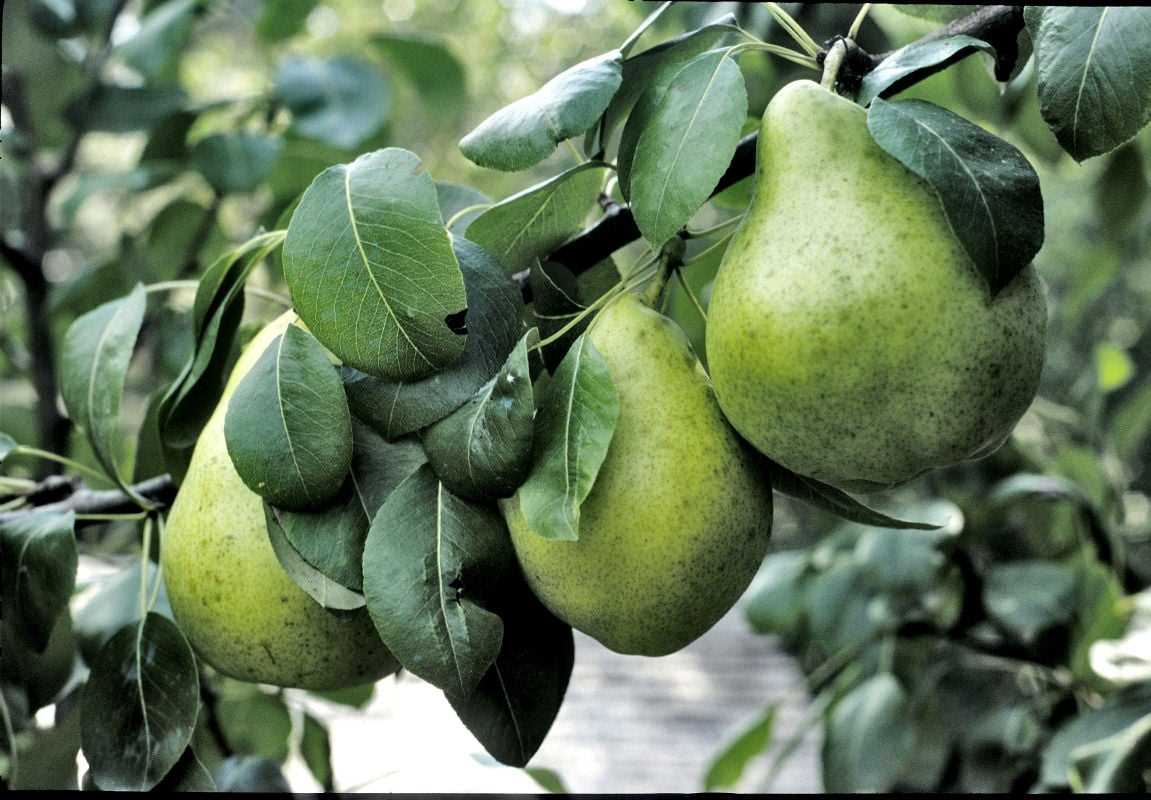
Regular monitoring of soil moisture levels is crucial to ensure the trees receive adequate water. This can be done by inserting a soil moisture probe or a simple stick into the ground near the tree’s root zone. If the soil feels dry, it is an indication that watering is needed.
Supplemental Irrigation
In areas with low rainfall or during dry periods, supplemental irrigation may be necessary to provide the pears on rowan trees with sufficient moisture. This can be done by setting up temporary irrigation systems or using rainwater collection systems.
Conclusion
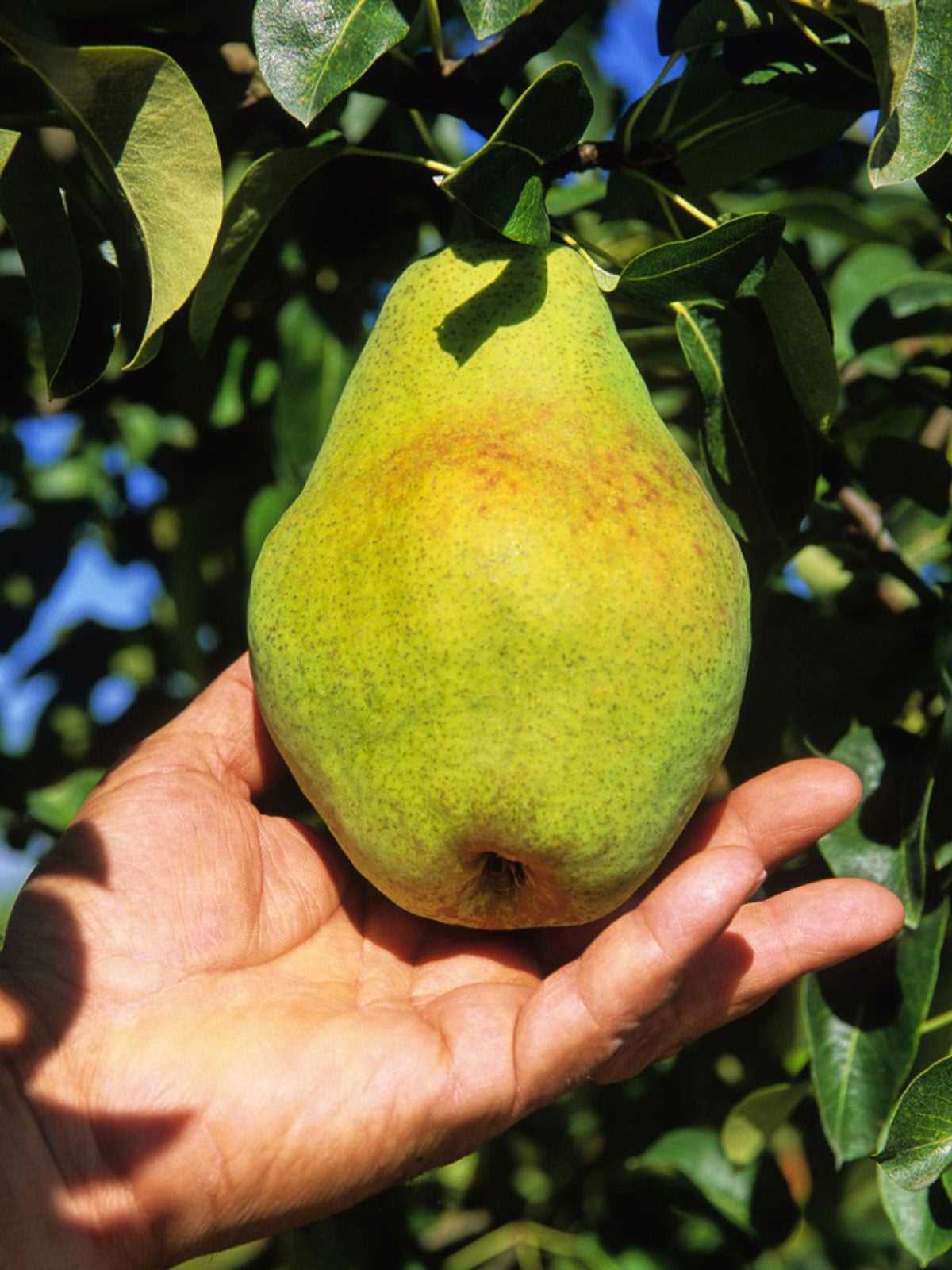
Proper watering and irrigation are vital for the health and productivity of pears on rowan trees. By understanding the watering needs of the trees and implementing appropriate watering methods, you can ensure optimal growth and a bountiful harvest of delicious pears.
Dealing with Pests and Diseases When Growing Pears on Rowan Trees
Growing pears on rowan trees can be a rewarding experience, but like any fruit tree, they can be susceptible to pests and diseases. Good garden management practices and timely intervention can help prevent and control these issues, ensuring a healthy and abundant harvest of fruits.
Pests
1. Aphids: These small insects feed on the sap of the tree, causing leaf curling and distortion. To control aphids, you can introduce natural predators like ladybugs or spray a solution of neem oil and water on the affected areas.
2. Codling Moth: The codling moth lays its eggs on developing fruits, leading to worm-infested pears. To prevent infestation, you can use pheromone traps or apply insecticides specifically formulated for codling moths during the appropriate timing.
3. Pear Psylla: These pests attack the leaves, causing them to curl and turn yellow. To control pear psylla, you can prune infected branches and apply horticultural oil in early spring before the insects emerge.
Diseases
1. Fire Blight: This bacterial disease causes blackened and withered branches and can spread rapidly. Pruning infected branches during dry weather and applying copper-based sprays in early spring can help manage fire blight.
2. Pear Scab: Pear scab is a fungal disease that appears as black spots on the fruit and leaves. To prevent pear scab, make sure to prune overcrowded branches for better airflow and apply fungicides during the growing season as recommended.
3. Brown rot: This fungal disease causes brown, rotting spots on the fruits. Avoid overwatering and allow the tree to dry out between waterings. Remove infected fruits promptly to prevent further spread.
Regularly inspecting your pear trees for signs of pests and diseases is crucial for early detection and intervention. Maintaining overall tree health, such as providing adequate nutrition and irrigation, can also enhance the tree’s natural resistance to pests and diseases.
Harvesting and Storing Pears from Rowan Trees for Long-lasting Freshness
Once the pears on your rowan trees have reached their peak ripeness, it is time to harvest them for consumption. Proper harvesting and storage techniques will ensure that your pears remain fresh and delicious for an extended period of time.
Harvesting Techniques:
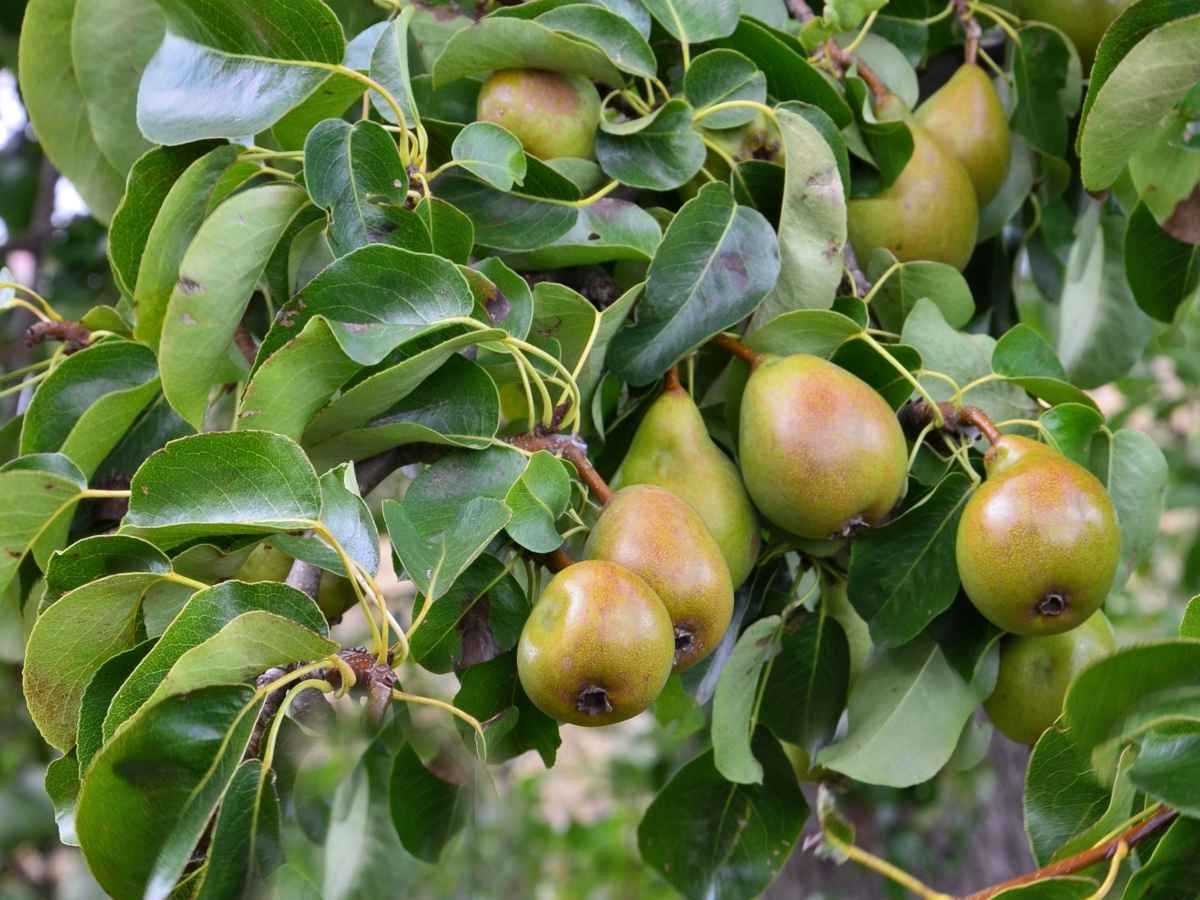
- Choose pears that are fully mature but still firm. Pears should easily detach from the tree when gently twisted.
- Handle the pears with care to prevent bruising. Place them gently into a basket or container.
- Avoid pulling or yanking the pears from the tree as this can damage the fruit and affect its quality.
- Harvest pears on dry days to minimize the risk of mold or rot.
Storing Techniques:
Proper storage of pears is key to ensuring their long-lasting freshness:
- Sort your pears and separate those that are bruised or damaged. Use these pears first as they will not keep as long.
- Avoid washing or cleaning the pears immediately after harvest. This can remove the natural protective coating and reduce their shelf life.
- Store pears in a cool, dark place with temperatures between 30 to 40 degrees Fahrenheit (-1 to 4 degrees Celsius). A root cellar or basement is ideal.
- Line a cardboard box or wooden crate with newspaper or straw to provide insulation and absorb excess moisture.
- Place the pears in the box in a single layer, making sure they do not touch each other. This prevents bruising and allows for better air circulation.
- Regularly check on your stored pears and remove any that show signs of decay or rot to prevent them from spoiling the rest of the batch.
Tips for Prolonged Freshness:
Follow these additional tips to maximize the longevity of your stored pears:
- Do not store pears alongside other fruits or vegetables, as they release ethylene gas which can accelerate ripening and spoilage.
- Consider using a refrigerator or cold storage facility for long-term storage. Wrap each pear individually in newspaper or place them in a plastic bag with perforated holes to maintain humidity.
- If you have a large harvest, consider preserving the pears by canning, freezing, or making jams and jellies for later use.
By following these harvesting and storing techniques, you can enjoy the delicious taste of fresh pears from your rowan trees for an extended period of time.
Question-answer:
Can I really grow pears on rowan trees?
Yes, it is possible to grow pears on rowan trees by grafting a pear scion onto a rowan rootstock.
What is grafting?
Grafting is a horticultural technique in which tissues from one plant are inserted into those of another so that the two sets of vascular tissues may join together and grow as one.
Why would I want to grow pears on rowan trees?
Growing pears on rowan trees can be beneficial because rowan trees are hardy and can withstand cold temperatures and difficult conditions. Additionally, rowan trees provide good pollination for pears.
When is the best time to graft a pear scion onto a rowan rootstock?
The best time to graft a pear scion onto a rowan rootstock is in late winter or early spring when both plants are dormant.
Will the pears grown on rowan trees be different from those grown on pear trees?
The pears grown on rowan trees will be the same as those grown on pear trees because the scion determines the characteristics of the fruit, not the rootstock.
Are there any special care instructions for growing pears on rowan trees?
Yes, there are a few special care instructions for growing pears on rowan trees. These include regular watering, fertilizing, pruning, and protecting the trees from pests and diseases.







